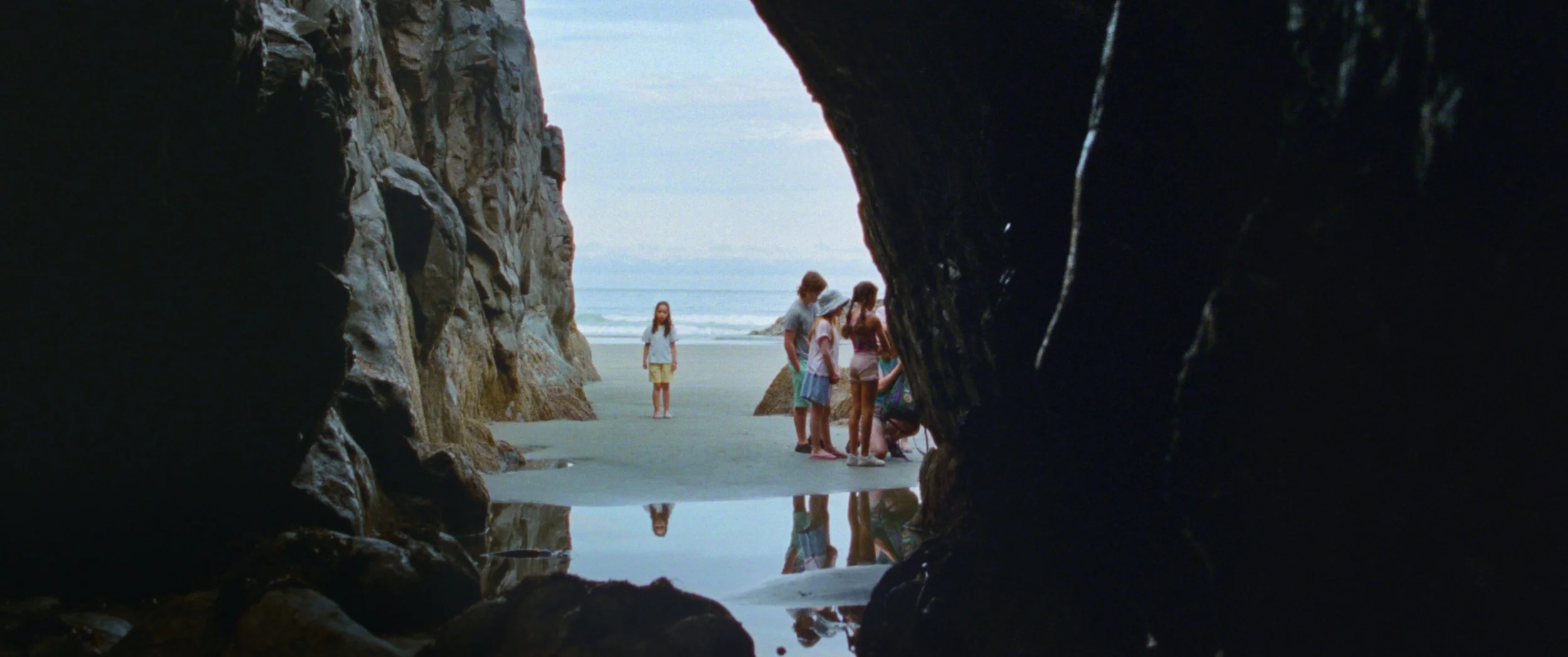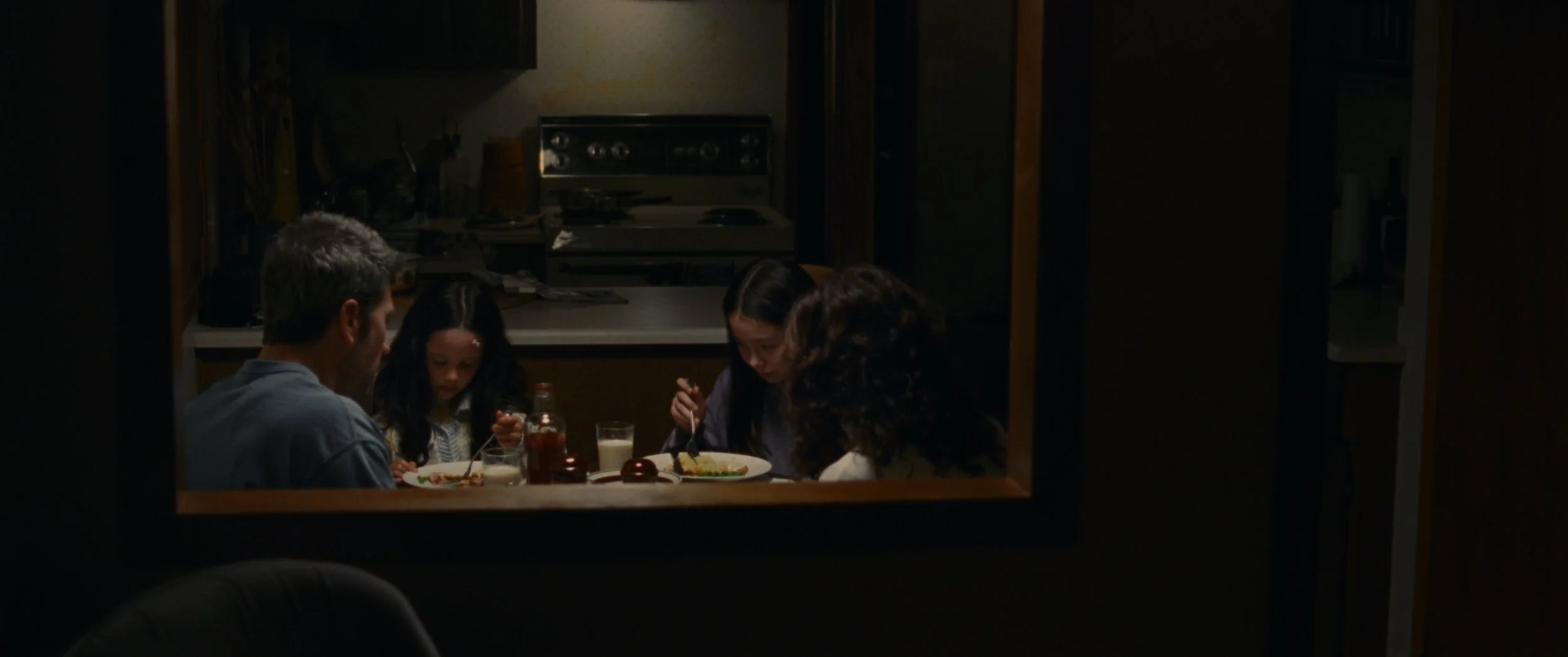'Seagrass' Review: Meredith Hama-Brown's Brilliant Feature Debut Spotlights the Growing Pains of a Family in Flux
Courtesy of Pender PR.
Traditionally, family vacations are moments for loved ones to unite and create unforgettable memories to last eternally. Meredith Hama-Brown's debut feature, Seagrass, capsizes expectations by portraying a family retreat that alters everything for its central characters and their family dynamic. Seagrass stars Ally Maki, Luke Roberts, Nyha Huang Breitkreuz, and Remy Marthaller as a young family headed to an island resort off the coast of British Columbia that doubles as a couple's therapy workshop, where they hope to heal from a recent loss and reinvigorate their sense of togetherness. Both culturally and spiritually poignant as it dexterously juggles the perspectives of its protagonists, Seagrass effectively depicts the flourishing talents of Hama-Brown as the director moves into feature-filmmaking.
In Seagrass, Maki takes center stage as Judith, a Japanese-Canadian woman struggling with the recent loss of her mother, who emigrated from Japan long before Judith's birth. Judith is married to Steve (Roberts), a white man whose at-first golden-retriever-like disposition perfectly fits into the "dad vibe" of the mid-90s setting in which Seagrass takes place. The couple has two children: Stephanie, caught in the most awkward stage between tween and teen, and Emmy, around 6 or 7, haunted by the recent loss of her grandmother. Arriving at a seaside resort that offers fun for the children and "restorative workshops" for the parents, Judith and Steve are placed in group work with another biracial couple, quickly becoming envious and comparative of their free-spirited nature. Simultaneously, the daughters face trials and tribulations that are part of growing up, coming together to create a rich illustration of a family in severe fluctuation due to disparate and valid reasons. With cultural and social concepts that come powerfully together, Seagrass explores the identities of its characters with deeply meaningful methods.
Courtesy of Pender PR.
Hama-Brown's screenplay manages to shift its perspectives between its central protagonists with a unique understanding and ease. The director undoubtedly sews seeds of autofiction into her female characters: the internal struggles experienced by Judith as she reconciles with her grief and revelations about her ethnocultural origins and the growing pains of youth felt by Stephanie and Emmy. Like the young girls, Hama-Brown is also a biracial Japanese-Canadian who grew up during the 90s as a child of divorce, and these connections shine through in the intricacy that permeates every frame of Seagrass. À la 2018's Eighth Grade, the children are captured with a sensitivity and interiority that speaks so honestly to the instabilities of childhood transitions; a truth rarely captured accurately across film and television.
While each family member faces their own hurdles on the less-than-ideal vacation at the film's core, Judith is the character the audience spends the most time with. Already dealing with grief, Judith encounters a reawakening when she meets Pat (Chris Pang, known for Crazy Rich Asians) half of another couple also in the retreat's therapy program. Pat is Chinese-Australian, and between his grounded nature and deeper connections to his heritage, he aids Judith in understanding the parts of her own life that she is missing. In contrast to Pat, Judith's husband Steve seems at first caring and concerned for his wife. But, as the film moves forward, it becomes clear that he is emotionally numb and unwilling to consider Judith's cultural identity integral to their family dichotomy, the essence of their children, making insensitive remarks about his wife's late parents and growing increasingly jealous. This incomprehension on Steve's behalf evolves into one of the family's main elements of fragmentation as Seagrass carries on. These questions of self-identity are some of the movie’s most brilliant concepts, especially when taking on a period setting through a contemporary lens.
Shot on 35mm film by Norm Li, the visual language of Seagrass reflects the somber atmosphere of its protagonist's states of mind with purpose, emphasizing the cloudy skies above and the murky, darkening waters of the Pacific Ocean surrounding them. While Li and Hama-Brown utilize formal, controlled camera work to reaffirm the stagnant mindsets of the adults, the children are depicted through shaky handheld cameras, a reflection of the instability they feel as they grow up and watch their parent's relationship disintegrate. This Ying and Yang in the camera's vocabulary are married in scenes that take on the movie's spiritual elements, where unseen (familial?) forces drift fluidly out of caves and through cabins, a wandering soul watching over the family. Although juggling many functions, Li’s cinematography impressively captures Seagrass's prevailing tones of uncertainty amongst its characters.
Courtesy of Pender PR.
Overall, Seagrass works as an intimate and hyper-focused portrait of a family on the brink of necessary change. Solid performances and casting choices really make the narrative believable, a work to become invested in. Although her first feature-length movie, Hama-Brown's direction and screenplay combine to make a film brimming with sharp tension and emotion, with ideas that can communicate many different experiences and walks of life. The restraints of the movie's small scale liberate it from becoming ostentatious, making its messages even more affecting. Seagrass world premieres in the Discovery section at the 2023 Toronto International Film Festival. Hama-Brown was signed with the Gersh Agency just days before the festival kicked off.


